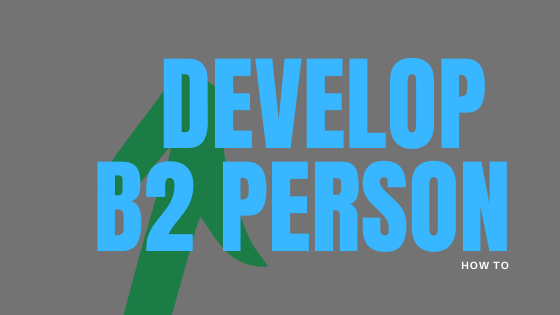In previous blog posts, I discussed why you should create personas and what a persona contains; in this post I am going to outline how you actually do it.
Persona as a living document
One thing to keep in mind is that a persona, especially for B2B, is a living document. It’s not something you do once, but instead a document that will continually be updated as you learn more. It’s important to take this attitude towards the document, as it acts as the foundation for your marketing activities.
The reality of personas is that most B2B marketers don’t really understand their persona. I have written about it on my blog previously but discovered this Content Marketing Institute survey that said only 57% of marketers in B2B have a deep understanding of their personas.
Step 1: Internet Research
The first step in almost any activity is to do a bit of research on the internet. Leverage your googleFU skills to track down any sort of details about the persona. You might want to check out industry groups, or even professional organizations. The purpose of this research is to make sure you sound intelligent when you start talking to others.
Step 2: Interview of Internal Resources
The firm you work for probably has a bevy of insight about a particular persona that they sell to, it’s just not codified. In scenarios like this, I almost always start talking to sales reps. I would recommend doing an internal focus groupwith a few reps and ask them about the persona.
Example questions:
- Who did you talk to last in this persona, and what did you discuss?
- What keeps them up at night (aka challenges)?
- Who is their boss? What does their boss care about?
- What type of budget authority do these roles have?
- How are they measured in their role? What would be a success?
- What is their influence in the organization?
- If you are trying to get to a new contact, how do you do that for this role?
One thing to keep in mind is that sometimes sales reps use their latest interaction and generalize it. So it’s important to talk to multiple reps to get their perspective.
Who else could you talk to in your organization? Well, I have found value in talking to product marketing and product management. You could ask a few of the questions on the above but be prepared for them to talk about the persona in terms of what they care about. Product management will probably be interested in use cases, and product marketing more in messaging. Those are quite relevant to marketing the products, just balance it with the reps. Others you can talk to in the organization might be product development or marketing executives. If you have industry experts, definitely tap into them.
Step 3: Interview Customers or Prospects
This step is a bit more tricky, as customer time is valuable. And chances are you might have executives that want any interaction with a customer to be about selling, not gaining insight. I have found that customers are usually eager to talk to you about their problems, especially if you tell them it’s not for sales purposes.
You should expect to compensate someone for their time though, anywhere from $50 to $500 based on their level. Make sure you when you reach out to them to offer the option of a donation to charity in their name. Some businesses and executives are forbidden from taking gifts from vendors.
Now, what do you do with the time? I almost always start by asking about their challenges. You might want to start the conversation by indicating you talked to someone else and they said this. And get them to validate. Let the customer do most of the talking, and awkward pauses can get people talking a bit more than they normally would. I usually will also delve into any conferences, vendors, websites, or publications that are important to them. Then wrap it by discussing their role in measuring success. I try to stay away from budget questions as that can come off as quite salesy.
Step 4: Codification and Validation
Finally, put your persona details into a document, and then validate it. You might want to go back to the internal resources you leveraged previously. You could use new sources. From here, publish and share your persona across your organization.

